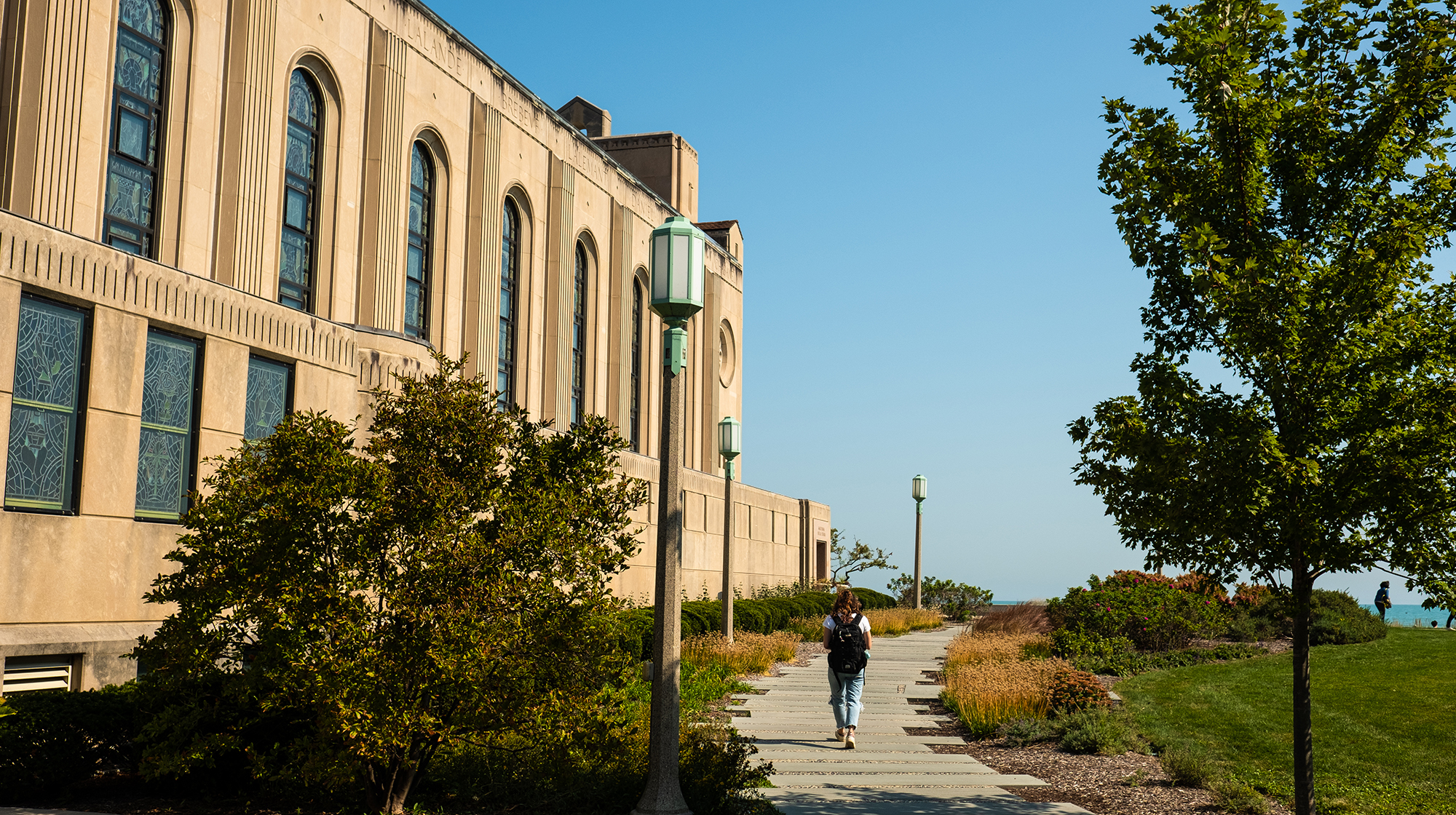Loyola University Chicago
THE EXPERIENCE OF LOYOLA BEGINS HERE.
High-worth National standing.
According to the most recent U.S. News & World Report rankings, Loyola University Chicago is ranked highly.
According to the most recent U.S. News & World Report rankings, Loyola University Chicago has maintained its standing as one of the best universities in the country. At #132, Loyola is among the top third of the country’s leading institutions, and at #81, it is among the top 100 most affordable universities.
National standouts in specialized programs
Loyola’s dedication to helping student veterans pursue higher education is demonstrated by its ranking in the top three institutions in Chicago for veterans and its inclusion in the top 90 best universities.
Thanks in part to an enhanced Yellow Ribbon Program that offers an unlimited match to veterans’ post-9/11 GI Bill benefits and fully covers tuition and fees for all programs save the Stritch School of Medicine, Loyola has advanced 68 positions from 2023.
Business and nursing programs continue to excel
-
Business and nursing programs continue to excel.
- With its undergraduate business program once again at the forefront, the Quinlan School of Business continues to be the region’s standard for business education at the college and school levels.
- Three majors—Accounting, Marketing, and Information Systems—are among the top 25 programs of their kind in the country, while Quinlan’s undergraduate business program has been ranked #1 in Chicago for over a decade and #94 nationally.
- Dean Michael Behnam stated, “The Quinlan School of Business is honored to be recognized once again for excellence in undergraduate business education.”
- “These rankings demonstrate our dedication to empowering change makers via a transformative, values-driven, and experiential education.” Chicago’s Loyola University
- Similarly, the Bachelor of Science in Nursing (BSN) program at the Marcella Niehoff School of Nursing has risen to an astounding #26 in the country, keeping it in the top 5% of undergraduate nursing schools. It is Loyola Nursing’s highest ranking to date. Chicago’s Loyola University
- Dean Lorna Finnegan stated, “This ranking reaffirms the strength of our BSN program and upholds our reputation for academic excellence.”
- “Our focus on creating a more equitable healthcare system for all and on training nurses in the Jesuit tradition continues to draw outstanding students from throughout the country.
- Appreciative of the faculty and staff who uphold our high clinical practice, research, and instruction standards.
Engineering program on the rise
- Another notable honor has gone to Loyola’s College of Arts and Sciences. Currently ranked #37 nationally, the undergraduate engineering program is the best in Chicago among programs that do not grant doctorates.
- “These rankings demonstrate how strong our programs are and how our faculty and students are driven by innovation,” stated Dean Peter Schraeder.
- Loyola’s dedication to academic achievement and creating a learning environment where students can flourish and contribute significantly to their disciplines is exemplified by our programs. Loyola University in Chicago
Campus Life

The Best of the Best
The Loyola campuses have many wonderful features. Our three Chicagoland campuses have much to offer, whether you wish to study in the center of Chicago’s renowned Magnificent Mile, enjoy the stunning vistas along Lake Michigan, or discover cutting-edge health sciences work in Maywood. Explore our modern facilities, historic structures, well-liked campus meeting areas, and some of the city’s best nearby treasures.
Multiyear research aims to combat opioid use among formerly incarcerated.
The Illinois Department of Public Health reports that during the previous ten years, the number of deaths from synthetic opioid overdoses rose by an astounding 3,341%. The Centre for Criminal Justice (CCJ) at Loyola University Chicago is working to lower those figures by conducting a multiyear study on parolees who have served time in prison, one of the groups most vulnerable to opioid overdose. Chicago’s Loyola University
The National Institute on Drug Abuse launched the Justice Community Opioid Innovation Network (JCOIN) in 2019. Loyola University Chicago
Supporting justice-involved people—that is, anyone who has dealt with the criminal justice system as a defendant—who are battling opioid addiction is the main goal of the nationwide initiative. JCOIN comprises 13 clinical research centers, or “hubs,” and two resource centers.
The Center for Criminal Justice is a component of the TCU hub, which is a joint research project between Texas Christian University, Loyola, the University of New Mexico, and the United States Illinois Departments of Corrections.
The TCU hub has been experimenting with new approaches to link parole-supervised at-risk persons to local drug rehab centers. Loyola University Chicago
“Drug overdose death rates among those leaving prison are significantly higher than those in the general population,” says David E. Olson, co-director of CCJ. “Offering people access to behavioral health services is one efficient way to lower that risk.” Chicago’s Loyola University
The multiyear investigation, which started in 2019, is scheduled to conclude in 2025. During this period, CCJ was awarded a $500,000 grant to carry out the study in Lake County, Rockford, Aurora, Peoria, Decatur, and East St. Louis.
Even though the City of Chicago provides a variety of programs and treatment services, the six study communities are in desperate need of resources for those who are battling substance misuse. Loyola University Chicago
It is considerably more difficult for members of particular groups, such as women, Spanish speakers, or those with mental health concerns, to find support in those places. Additionally, 62% of inmates on mandatory supervised release (Illinois parole) who need therapy upon incarceration reside in those six communities. Chicago’s Loyola University
Although the study is conducted in three jurisdictions with quite diverse parole laws, the procedure is the same: hands-on and on the ground.
The Illinois team conducted interviews with individuals who were leaving prison to better understand the reentry process, particularly with regard to treatment access.
Additionally, they established workgroups involving personnel from public health organizations, community behavioral health providers, parole offices, and other nearby institutions. CCJ shared important statistics and analyses throughout the workgroup meetings. Loyola University Chicago
They also held brainstorming sessions to improve access to substance addiction treatment services and talked about how to find parolees who have a proven need for them. Chicago’s Loyola University
The rate of drug overdose deaths among those leaving jail is significantly higher than that of the general population. Giving people access to behavioral health therapies is one practical strategy to lower that risk.
The outcome? Local agency employees and parole officers collaborated to create strategies that incorporated one other’s areas of expertise. Loyola University Chicago
Before joining the workgroups, parole officers worked case-by-case with local police but had little contact with treatment providers or community-based organizations.
In exchange, these local stakeholders frequently had no idea how many persons were on required supervised release or how they varied from probationers. The workgroups altered that. Chicago’s Loyola University
This was the first time many public health organizations and community behavioral health practitioners had ever interacted with the parole officials in their locality. They now understand their work considerably better,” Olson explains. “Parole staff also learned about community-based resources that can help their clients.”
Community providers, parole office employees, local health officials, and other workgroup members echo Olson’s views. According to a parole leader, “this was eye-opening,” as they had not often engaged with local substance abuse organizations.
Speaking about the advantages of this partnership, a representative of the local public health department added, “I think when we sit at a table like this, we learn from each other.” Loyola University Chicago
Furthermore, the CCJ gave local parole officers vital information about the population they catered to, which helped them see their work from a broader perspective. This included information on the kinds of substances they abused, recidivism rates, and the proportion of individuals under their supervision who needed treatment.
According to Olson, “most of their comprehension of those issues was founded on what they’d witnessed daily.” “You might just notice the mistakes and the arrested individuals, but you don’t notice the things that don’t take place.
It is crucial to help those on the front lines understand how their actions fit into the larger picture of lowering crime and expanding access to treatment programs.
By disseminating their findings to other pertinent government bodies, the CCJ study team is promoting the allocation of additional resources to assist formerly jailed individuals with addictions.
The CCJ is also creating training webinars because one of the study’s objectives is to offer a guide for other states.
Some guidelines are “not that sexy,” as Olson laughs, but they greatly impact those who need therapy and have been connected with the judicial system. For instance, offering transportation to treatment services is one of the main ways to improve results.
Another is ensuring that people sign a paper granting treatment providers access to their information after release. Olson states, “As straightforward as that may seem, that’s one of the biggest barriers [for accessing treatment] that people identified.”
As the TCU hub study moves into a new stage, the emphasis will be on implementing the workgroups’ strategies and ensuring they become standard.
According to Olson, the true objective is for this to become more routine and institutionalized inside the state.
For the next year and a half, we’re focussing on setting up the systems that will enable it to occur […]. Making sure that people have access to services can help ensure that rehabilitation and victimization reduction are the goals of the legal system.



